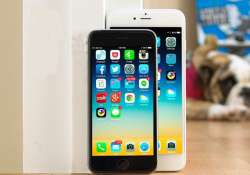What the iPhone 6 is really made of
New Delhi: The iPhone 6 and iPhone 6 Plus went on pre-order on Friday morning in the US, UK, and many other key markets. Earlier it was rumoured that Apple would have a sapphire screen,

New Delhi: The iPhone 6 and iPhone 6 Plus went on pre-order on Friday morning in the US, UK, and many other key markets. Earlier it was rumoured that Apple would have a sapphire screen, as apparently it was certainly Apple's intention to use the super-tough material in its new handsets. However, the company abandoned the idea as dodgy drop test results and the cost of using the material made it too risky a proposition in the end, leading Cupertino to switch to "ion-strengthened" glass.
To know more about what sort of chemicals have gone inside the making of the new iPhone, the American Chemical Society has created a video that explains why this type of screen is typically stronger than other displays.
The process of ion-strengthened glass involves putting the glass into a hot bath of potassium salt, typically potassium nitrate, at around 300°C (572°F). This causes the sodium ions in the glass to migrate, which in turn causes sodium ions in the glass surface to be replaced by potassium ions from the bath solution. The larger potassium ions in the bath squeeze themselves into the holes created by the moving sodium. This compresses the glass, to accommodate the larger ions, which in turn makes it stronger.
Though the glass shatters like the traditional glass, it is said to be between six and eight times stronger.
The touch screen of the phone that makes it responsive to all those taps and swipes has a composition of elements such as indium, tin and oxygen. Indium oxide and tin oxide are combined to create indium tin oxide, which then goes into the transparent film in the screen that conducts electricity.
Other composition of the phone includes: nickel in the phone's microphone, tin and lead at the solder points, and silicon in its microchips.
On the outside, there are aluminum or magnesium alloys that go into the making of phone's housing. There's also plenty of copper, gold and silver in the wiring and components of the iPhone. In addition, there are also rare elements like praseodymium, gadolinium and terbium.
In contrast, sapphire screens are made from synthetic sapphire - a hard, transparent material made of crystallising aluminium oxide, produced at high temperatures.